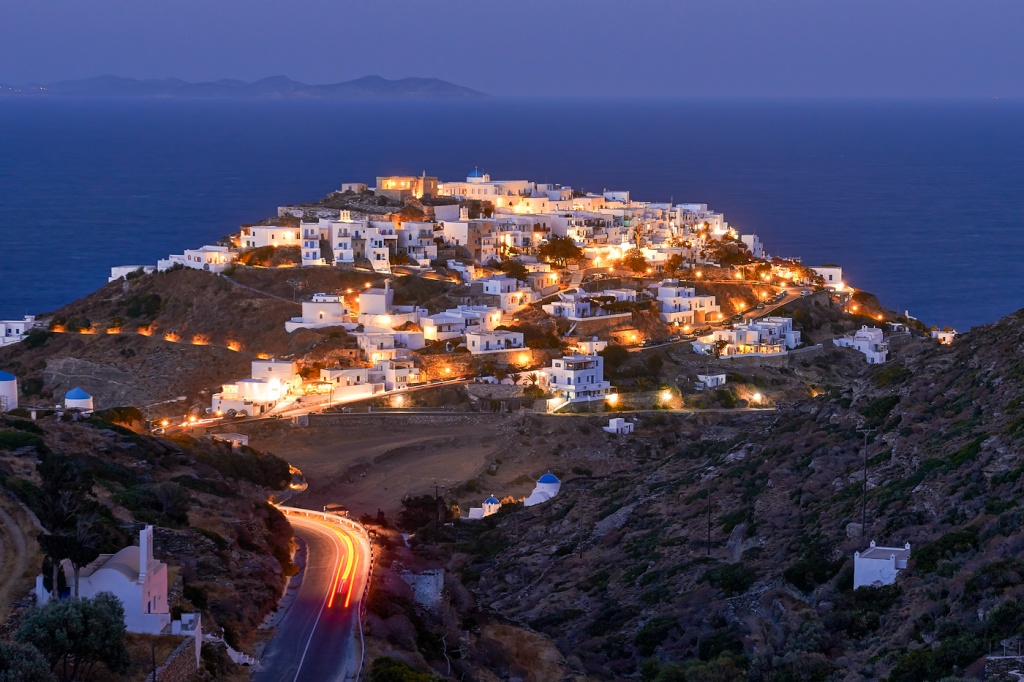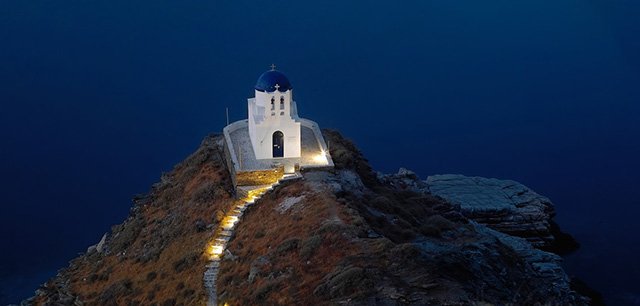The castle is the old capital of the island and the seat of the Archdiocese of Sifnos (6th-19th century). It is one of the most picturesque and beautiful settlements on the island which reached its peak in the 6th century. It has been inhabited from the prehistoric times (the first inhabitants settled here in the 3rd millennium BC) to the present.
The settlement has an ellipsoidal shape and a defensive character. There are two defense rings of buildings, one built near the other, with mansions in the inner ring and simpler houses in the outer ring.
The Castle looks like an open-air museum as it contains the ruins of the ancient citadel, ancient columns, Roman sarcophagi, the six arcades through which you can enter the village and churches of the 16th and 17th century.
At the highest point of the village you will see the building of the old Catholic cathedral church while in the center of the village you will find the Archaeological Museum with exhibits (mainly sculptures and coins) from the prehistoric to the Roman era.
East of the Castle there is the picturesque chapel of the Seven Martyrs which offers a panoramic view of the sea. Further north there is an ancient path which leads to the Church of Panagia Poulati. West of the Castle, at the foot of the hill, there is Gialos. This is a small beach with pebbles which used to be the ancient port of the island.
In the early 17th century, the first school of the island opened in the Castle. Another school, the famous School of Archipelagos opened in the mid-17th century. Forty-eight bishops, two ecumenical patriarchs and great teachers and priests such as Nikolaos Chrysogelos (who later became the first Minister of Education of the Modern Greek State) graduated this school.
The Castle nowadays has a few rooms to let, restaurants, bakeries, cafes, bars and taverns.





